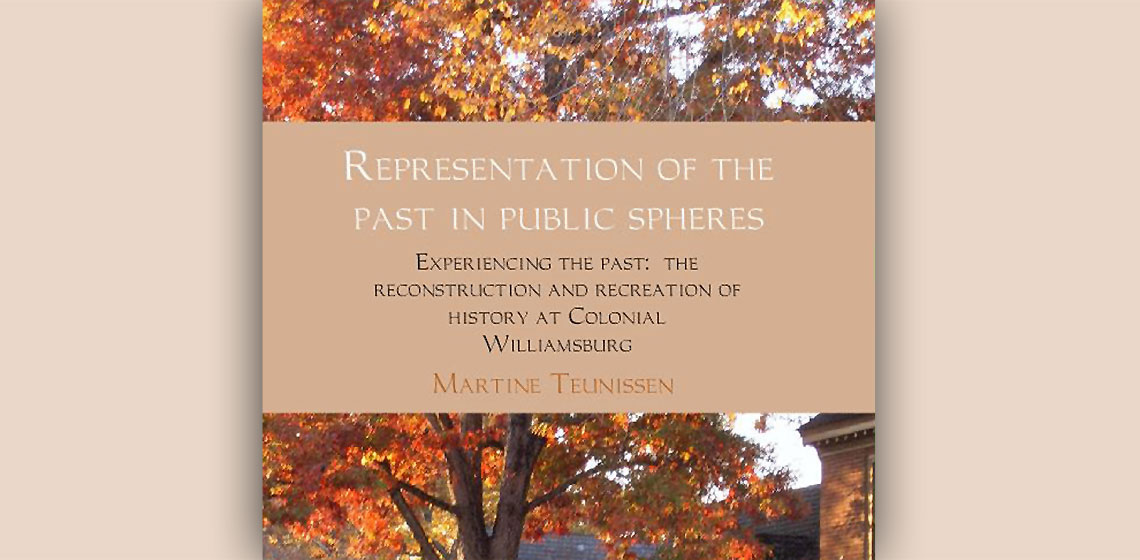
When I read the title, I particularly looked forward to reading this book and I was not disappointed. I am glad I was allowed to review it. Colonial Williamsburg has been held up to me as an example to follow when interpreting in living history and open air museums and also criticised when they don’t get it right. I was curious to see why and how they reached that reputation.
I am the Collections Manager/Curator at Kings Landing, New Brunswick, Canada (mentioned in Appendix A). I have worked as an interpreter and educator off and on for over 35 years and have seen some excellent examples of first and third person interpretation at my own places of employment. I help to facilitate our own interpretation program with feedback and research. We also portray the Loyalist experience after the Revolution in contrast to Colonial Williamsburg during the War for Independence.
Martine was an intern at Colonial Williamsburg in 2006, the first year of the program, and studied “Revolutionary City” which forms the basis of this book. Almost one third of the book was historiography and background to living history and public history, one third the history of Colonial Williamsburg and the Revolutionary City program and one third appendices.
Martine does an excellent job examining various research documents and books and the historiography on public history, proving she has done her background homework. She introduced me to sources I was unaware of. Her description of the corporate history of Colonial Williamsburg and the various interpretive programs, including Revolutionary City, were the most exciting and informative parts of the book. The appendices could have been reduced leaving out the transcripts of the interviews altogether. Many were outdated and did little to support her various conclusions. The relevance of the Entrance Building and Historical Bridge to the book and the weekly programming left me puzzled as to why they were there.
Martine conducted interviews to evaluate the success or failure of Revolutionary City from the visitor’s perspective. She admits her sampling was small and I agree. Unfortunately, due to the small sampling, I feel she never achieved her research goal and the results don’t paint a true picture of audience engagement. I think she could have devoted less time talking about that particular study as she tended to repeat the same conclusions over and over again and leaves the reader bogged down in her analysis. Her conclusions needed a larger sampling to be taken seriously and as completely accurate. I would have liked to have seen some interviews with non-Americans or those who knew the Loyalist side of the story and how they received the presentations. Martine almost makes the assumption that most visitors were patriotic Americans who believed whole heartedly in the American “cause” and traditional belief in democracy.
Marine also offers an analysis of the role of theatre in interpretation. I liked that she gave a synopsis of the background material the actors studied. I think some material should have come from the perspective of the loyalists to balance the material.
The best part of the book is the description of Colonial Williamsburg’s development of interpretive programs and the behind the scenes look at how they were formed. I would have loved to have seen more of this especially since it pertains to what I do. The discussions on corporate goals left me comparing them to what Kings Landing’s corporate objectives have been and are at present.
The Revolutionary City program was discontinued in 2016. It would have been amazing if Martine had returned ten years later to see how it had evolved and changed. I am looking forward to seeing what Colonial Williamsburg presents as their next model. I have never visited Colonial Williamsburg but have used their research material on life in the colonial period and the craftsmanship and trades.
Martine’s book is a good study in an area which receives little study; interpretation at living history/open air museums and how it connects to public history. I highly recommend that this book be read by any museum employee attempting to develop a theatre based interpretive approach. This book shows what works and what doesn’t based on Martine’s study of Colonial Williamsburg’s Revolutionary City.
Book information:
TEUNISSEN, Martine, 2017, Representation of the Past in Public Spheres. Experiencing the Past: the Reconstruction and Recreation of History at Colonial Williamsburg, Oegstgeest: Beleef Het Verleden, ISBN: 978-9402155754.
Book available at:
http://www.beleefhetverleden.nl/product/pdf-format-book-representation-of-the-past-in-public-spheres
http://www.beleefhetverleden.nl/product/boek-representation-of-the-past-in-public-spheres/